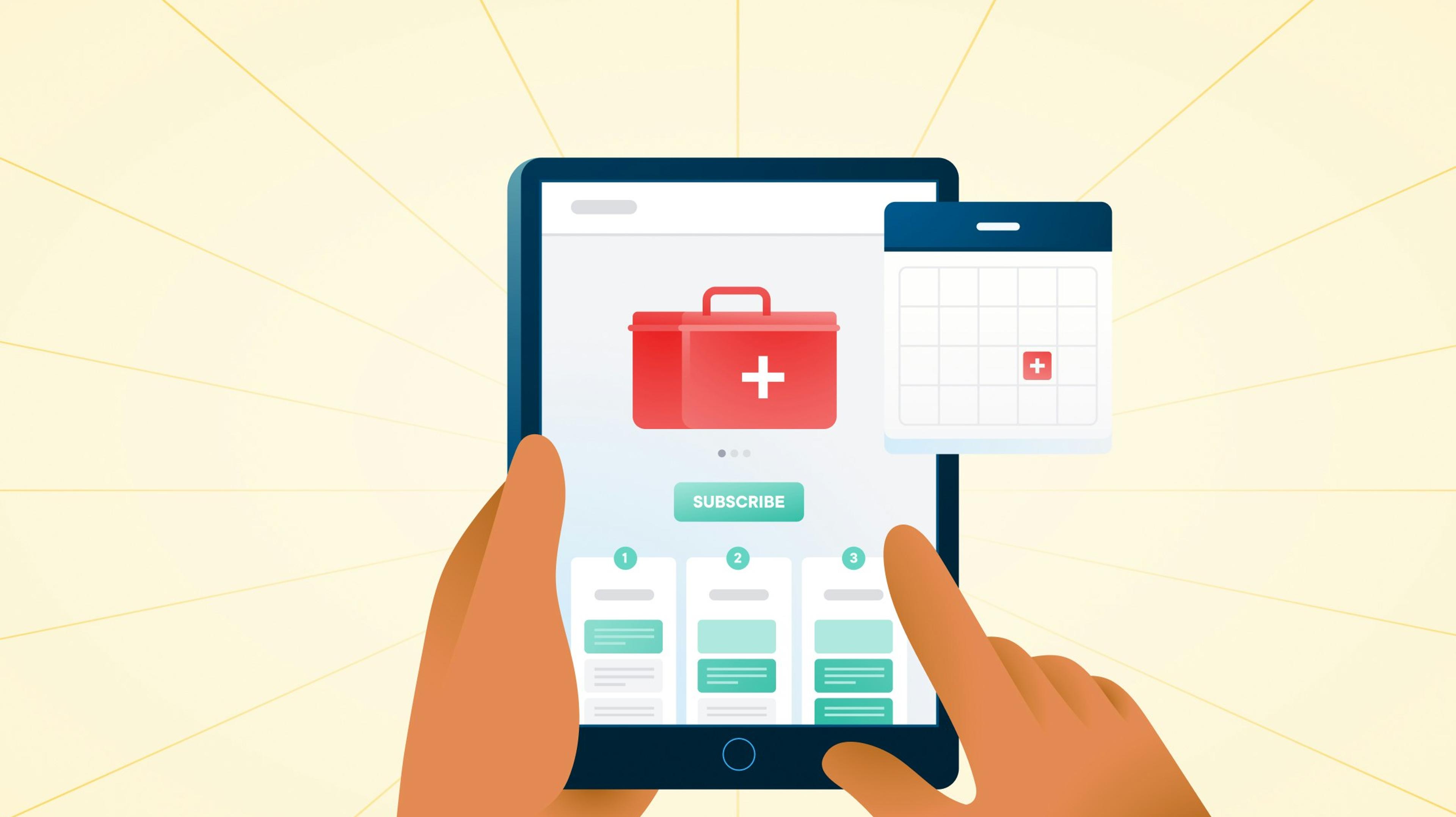Dealing With Difficult Customers — 7 Tactics That Work

Late or lost deliveries are a surefire way to upset customers. Trust Circuit for Teams to help you plan and track fast routes and minimize difficult customers coming to you with complaints.
As a business owner, you want your customers to be happy with your products or services.
After all, customer satisfaction leads to loyalty, which can help boost business.
Plus, a customer who loves your company’s offering — whether it’s fresh-made food or hand-stitched clothing — is likely to tell other people about it, giving you valuable word-of-mouth marketing.
In fact, word of mouth is shown to be the main driver for 20% to 50% of all purchasing decisions.

The only problem? Customers aren’t always happy.
In fact, they can sometimes be downright difficult.
Knowing how to deal with difficult customers can help you handle challenging situations — from unwarranted complaints to straight-up rude behavior.
For example, you might have an angry customer who takes their frustration out on an employee, possibly raising their voice, speaking rudely, or even calling them names.
Some of these alterations get physical — like this incident of a man attacking a UPS store manager in Miami. In Scotland, an airport even had to shut down its customer service phone line because of the amount of verbal abuse staff were getting.
You can’t let people abuse your team members. But you also don’t want to piss off an already-angry customer even more!
How do you react? If you’re coming up with nothing, don’t worry. I have you covered.
Read on to learn the importance of knowing how to handle difficult customers and the types of tough customers you may come across as a business owner.
I’ll then finish up with some actionable tips for dealing with difficult customers — giving you an easy set of steps to follow when you’re facing these kinds of nightmare scenarios.
The importance of knowledge and training for difficult customers
Maybe you’re hoping you can get through life without dealing with difficult customers, ever.
Hate to break it to you, but the odds of that happening are slim (more like nonexistent).
At some point in your career as a business owner, you’re sure to deal with a customer complaint.
How you handle that scenario can help determine whether the interaction goes smoothly — or escalates into the type of situation people film and put on social media.
We’ve all seen those viral videos of customers screaming, throwing things, or generally having a meltdown, right? In 2022, this viral video of an angry customer attacking a taco vendor in Los Angeles was one of many making the rounds online.
Of course, not every difficult customer scenario is that extreme.
Some customers may simply be demanding or critical, for example. (The next section goes into greater detail on the types of tough customers you might encounter.)
Regardless of what type of tricky customer you’re facing, you must know how to deal with them. This can help de-escalate tense situations and help you maintain customer satisfaction.
If you appropriately deal with difficult customers, it can also lead to greater customer loyalty.
In fact, good customer service can turn difficult customers into more loyal ones, the Harvard Business Review reveals.
If your customer has concerns and feels those concerns have been addressed, they might be more likely to stick by your side.
The National Business Research Institute also discusses how dealing with a difficult customer can actually be a good thing in terms of building long-term loyalty.
Say a dissatisfied customer returns your product. Your customer service team accepts the return, no questions asked, and gives them a full refund.
Not only is the issue handled, but this act may well earn a lifetime of loyalty from that customer.
The customer will probably be pleasantly surprised and may even share their story with friends and family.
In doing so, they become a champion of your brand, helping spread the word not only about your products and services but also your customer care.
This is a fantastic way to boost your business reputation for free.
But if you fail to deal with customers the right way, you could risk getting a bad business reputation. For example, Hermes, the UK delivery company, was dragged down by a negative reputation — to the extent that the company rebranded to Evri.
Previously, the company remained plagued by rumors of poor service — packages being damaged, tossed over fences, and generally poor customer care. The “new and improved” (read: rebranded) Evri finally managed to turn around its reputation with an uptick in good reviews on TrustPilot.
Long story short, managing a difficult customer can either make or break your business.
Do it right and boost loyalty. Do it wrong and watch your reputation sink.
With the right approach, you can have the customer walking away feeling valued by your business, impressed by your customer service, and ready to return again in the future.
The result? Greater customer loyalty, better retention, and more business for you in the future!
Plus, your brand reputation will shine.
What does this mean? Taking the time to learn how to deal with tough customers is well worth it.

5 types of difficult customers to understand
What makes for a great customer? They’re polite. They know what they want. They clearly communicate their wishes, and their requests are realistic.
For example, if you create custom wedding dresses by hand, a realistic customer will understand that they won’t get their dress in a 24-hour turnaround time.
If only they were all like that!
The perfect customer is hard to find. People can be difficult as customers in many ways.
Here are some of the most common types of tough customers you may come across as a business owner, along with some signs to help you identify each one.
- Complainers: It’s normal to get a mix of positive and negative feedback from your customers. However, customers who constantly complain about seemingly everything — even petty things — can be difficult. They may even gripe about the things you can’t control, like the weather!
- Indecisives: When a person is indecisive, they have trouble making a decision. They may ask a lot of questions — followed by even more questions — all without ever making a purchase, no matter how thoroughly you answer their questions. Frustrating, right? Indecisive customers are usually afraid of making a purchase mistake and may request details about everything from features to price, deals, and more.
- Know-it-alls: The only thing worse than the indecisive and confused customer? The one who thinks they know it all. They may try to tell you things about your employees, your business, and your industry at large. They may be domineering in conversations and stubborn. For example, if you tell them that current shipping times are 10 weeks, they might tell you that they read an article saying current shipping times are just seven weeks. Try not to roll your eyes!
- Impatience: Impatient customers tend to be unrealistic. They want something, and they want it now. It doesn’t matter if the item isn’t in stock and needs to be shipped from China. If the impatient customer’s needs aren’t met, they may get angry.
- Bullies: This is the stereotypical difficult customer — the one we hear horror stories about or see videos of on social media. Aggressive customers might be rude, arrogant, verbally abusive, or even physically aggressive, as happened at a Bay Area bakery where angry customers attacked the staff. They often complain loudly and speak with a raised voice. Bullies may also fixate on newer or younger team members, taking advantage of their inexperience to flex those bully muscles.
Now that you’ve got an overview of the different types of difficult customers, the question is: How the heck do you handle them?
There are some general guidelines you can follow to keep people like these in check.
Read on to find out what business owners like you can do.

7 tactics to deal with difficult customers
There are a lot of types of upset customers. But the way you handle them is actually pretty much the same across the board.
That might come as a surprise. But once you’ve handled a few tough customers, you’ll see it’s true.
The truth is that all difficult customers share one thing: They have a need that they feel isn’t being met.
So, dealing with tough customers is all about addressing that fact.
It’s up to you as the conflict resolution agent to figure out what their unmet need is (or what they think their unmet need is) and act accordingly.
Here are some quick steps to help you do that.
Listen carefully
An unhappy customer needs to feel heard. Take the time to listen.
Hearing and being heard are essentials of human communication. If these basic needs aren’t met in an interaction, we may get frustrated.
It can be tempting to defend yourself. Instead, give them the opportunity to speak and explain the (perceived) issue on their side.
If they feel like you’re ignoring them or dismissing them, they’ll likely get even more frustrated.
Make sure to use active listening as the customer’s problem is explained. Use body language, face them straight-on and make eye contact. If you’re on the phone or a video call, make sure to look at the camera and nod your head.
You can also use phrases like “I see” to convey that you’re paying attention. This guide to active listening has additional tips.
Why does this work? By giving the customer the chance to let off some steam, you might be able to help them cool down.
Active listening can help diffuse tension with a rude customer and show them that you’re invested in hands-on customer support instead of just dismissing their gripes.
Stay calm
It can be tempting to defend yourself or get annoyed with bad customers, especially if they’re being aggressive.
However, if you respond aggressively, the demanding customer will likely escalate. This is a natural fight-or-flight response, which you want to avoid in this case.
Practice self-soothing techniques, like taking a deep breath or visualizing a soothing scene to stay calm. Get more ideas for keeping your cool.
Also, try to keep a calm stance and be aware of your body language. For example, don’t cross your arms, which can look combative. Keep your weight evenly on both feet, your arms loose by your sides, and your fists unclenched.
This is another effective technique because stress and anxiety are proven to be contagious, according to Harvard Business Review. If you let yourself get worked up, this can further agitate the customer.
A better reaction is to keep calm.
It’s easier said than done sometimes, but staying calm is well worth it! The last thing you want is to shout at a customer (or burst into tears in front of them).
Practice empathy
For better conflict resolution, practice empathy. This means putting yourself in the customer’s shoes and imagining how the customer feels.
You can convey empathy with phrases like “I understand why that’s annoying” or “I get why you feel that way.”
Don’t just reach for something like “I’m sorry.” Show that you get them.
Ask clarifying questions (a proven empathetic response) to better understand the customer’s issue.
Sometimes, difficult customer situations are the result of simple misunderstandings. Make sure you have all the information needed to address their concerns before responding to them.
Another empathetic technique is conveying that you care. Make it clear that you’re not dismissing the customer’s concerns.
For instance, don’t just stand in the middle of your business space hashing it out with them. Invite them to take a seat and talk to you, showing that you’re giving them time, attention, and understanding.
Maintain your tone of voice
Great customer service skills are just as much about how you say something as what you say.
Details like body language and your tone of voice can either make the customer feel heard or ignored. To avoid ruining customer relationships, maintain a steady tone of voice.
Don’t yell or shout, no matter how frustrated you get. This can be challenging when you’re dealing with difficult people, but it can help you in the approach.
You don’t want to escalate matters by shouting.
Plus, if your staff sees you interacting in this way with a customer, they might think it’s OK for them to act that way, paving the path to poor customer service in the future.
A shouting manager can also hurt employee morale and possibly lead to staff losses.
Maintaining an even, friendly, helpful tone can make you look good to all involved. It can also help you stay calm.
If you start elevating your voice, your adrenaline may start pumping. This can result in physical symptoms like a racing heart and sweaty palms. You can even experience symptoms like heart palpitations, hurting your own well-being.
Plus, in a conflict situation, this can leave you with nervous, anxious energy — not ideal for conflict resolution.
Research has shown that stress and anxiety can spread to others, so if you’re showing signs of nervous agitation, that can be contagious. This leaves you both worked up and anything but calm, making it even harder to reach a resolution.
Keeping a moderate tone and maintaining your cool will help you avoid those uncomfortable symptoms and improve the odds of a resolution.
Don’t take customer interactions personally
When a customer is behaving badly and being unkind to you or simply complaining, it can be really hard not to take it personally.
Unfortunately, taking customer abuse to heart can likely make matters worse.
According to the experts at MentalHelp.net, anger can often be a replacement emotion for being hurt. So, if you let yourself get personally offended and feel hurt as a result, you’re less likely to follow the other tips above, like keeping calm and not raising your voice.
If you notice yourself getting offended, hit pause in your brain. Question your thoughts.
Remind yourself that the customer would act the same toward any other manager or business owner.
It’s not about you — they need to vent and will attack the first person who crosses their path (or who they think is responsible for their issue).
Why does it work? When you don’t take these interactions personally, you can handle them calmly.
You also won’t feel the same psychological weight as if you experienced the issue as a personal attack.
Here are more tips on learning to not let things affect you personally, like reminding yourself of your worth.
Give in to the customer accordingly
Sometimes, great customer service means giving in to customer demands.
Yes, it can sting. But it’s often worth it to protect your reputation in the long term.
Ultimately, you want to create a positive customer experience. That might involve giving in to asks that you wouldn’t normally — all for the greater good of keeping the peace and winning customer loyalty.
For example, say someone wants to return an item of clothing, but they’ve already cut off the tags.
Your store policy is to only accept items with tags still on — but now they’re complaining. They still have the receipt, and the clothing appears unworn.
So, consider making an exception. It can spare you a big headache.
It might seem like giving in to customer demands means you’re “losing.” But remember, customer service interactions aren’t a battle to be won.
The aim is for the customer to walk away satisfied. This is how you guarantee repeat customers and a good brand image.
By making some concessions, you increase the odds of that happening.
Stay true to all promises
Last but not least, make sure you uphold any promises you make to the customer.
For example, if you tell them they can return an item, don’t go back on your promise. You don’t want to create additional disappointments.
This will only anger the customer further, resulting in additional issues down the line and hurting your reputation.
This means being realistic about what you can offer your customers.
For example, say you shipped a customer a glassware set, and it arrived broken. You promise to ship them a new set within 48 hours.
If you make a time-sensitive promise, you better make sure you can live up to it. Even if your shipment is just a day late, it might cause additional gripes from the customer.
Staying true to your promises helps show the customer that you’ve taken their concerns seriously and addressed them honestly.
This speaks to your reliability as a business owner and can boost your reputation. It also attests to your integrity.
You don’t want your customers casting any doubt on your good intentions!

What do customers expect from businesses today?
Dealing with difficult customers isn’t fun. But it’s more necessary than ever before.
The business landscape has become increasingly competitive. As you’re aware, the burgeoning eCommerce market means people no longer need to rely on traditional brick-and-mortar shops.
ECommerce is expected to take a 24.5% share of the global retail sales market worldwide by 2025. Plus, there are still physical stores to compete with.
The point is that you can’t afford to get a bad reputation for poor customer service because of one disgruntled customer.
This is especially true in the social media age, when customers can turn to outlets like Twitter and Facebook to trumpet bad reviews.
Some people will even turn to social media before reaching out to a customer service hotline — there are guides that show them how to do it, like this one from USA Today.
And responding in the wrong way to a social media grip can quickly garner negative press. This was the case with Delta Airlines, which replied with a “harsh” tweet to a customer’s complaint — and got plenty of pushback online.
Taking the time to take care of one customer’s demands now can save you a lot of headaches later trying to undo the damage.
Also, since consumers have many options, their expectations are higher.
They can easily pivot and switch to a different business if they aren’t happy with a service, product, or customer service experience.
But that also means there are opportunities to get new customers and win them over with great service.
Dealing with difficult customers in an effective manner is just one way you can up your customer service game and keep consumers happy.
You can also make sure you’re offering the best service possible by simplifying the customer’s experience.
For example, if you’re delivering to customers, you can help them know when to expect their delivery with timely notifications sent directly to their phone through text message (something you can do with courier software like Circuit for Teams).
Drivers can even give updates from the road in real time, for example, if they hit traffic due to an accident and expect a delay.
Also, if you deliver products to customers, make sure that your shipping processes and prices are clear. Ask yourself:
- What options do customers have for shipping?
- How much will it cost them?
- How quickly can they expect their package?
Finally, where can they turn if they have questions about their package’s progress?
While you can rely on third-party companies like FedEx or UPS to handle your business shipping, you can also create your own service for a great delivery experience.
This can be a great option for business owners who don’t ship internationally and focus on local deliveries.
If you go this route, trust Circuit for Teams to help. With this software, you can organize delivery routes quickly. Our routing software plans the fastest sequence of stops for your drivers.
You can then assign the routes and track your drivers’ progress in real-time using GPS tracking technology.
With Circuit, you can get deliveries right every time.
Delivering to customers yourself? Circuit for Teams can help
Dealing with difficult customers is part of every business owner’s or manager’s job.
By addressing customer complaints, you can improve loyalty.
But if you fail to handle a tough customer, be aware: They may retaliate by trash-talking you on social media and other forums, ruining your reputation and hurting your business success.
There are many types of tough customers, as our guide makes clear.
However, the way you deal with them is pretty consistent across the board. Master the above techniques, and you’ll be ready to face off against even the toughest crowd.
You can also help keep customers happy by making sure your deliveries are on time and streamlined.
One quick and easy way to improve your delivery services: using Circuit for Teams.
Take control of your product shipping, saving time, stress, and money — and meeting customer expectations.
Circuit for Teams has extras like real-time tracking and proof-of-delivery features that make your shipments even easier to manage.






